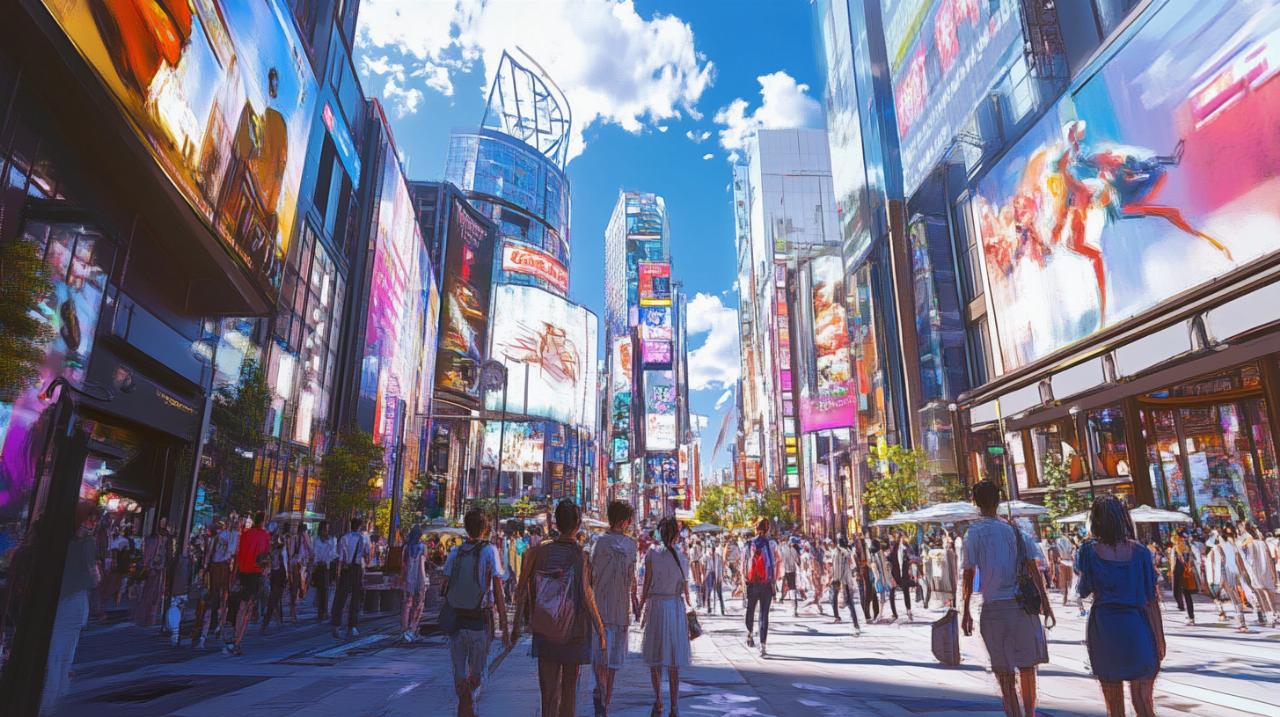Cities across the United Kingdom are undergoing a remarkable transformation, reflecting broader changes in how residents interact with their environments and each other. From reimagined residential developments to vibrant cultural movements, the urban landscape is evolving at a pace that challenges traditional notions of metropolitan life. As populations grow and environmental concerns intensify, innovative approaches to housing, community engagement, and cultural expression are emerging, creating dynamic spaces that prioritise sustainability, connectivity, and inclusivity. This exploration delves into the forces reshaping our towns and cities, examining how design, technology, and cultural shifts are converging to redefine what it means to live in an urban setting today.
The Evolution of Contemporary Housing and Community Spaces
The way we think about housing has shifted dramatically in recent years, with sustainable urban planning taking centre stage in discussions about the future of our cities. Energy-efficient buildings are no longer a niche concept but a necessity, as local authorities and developers recognise the urgent need to address climate change and resource management. Green infrastructure is being woven into the fabric of new developments, with vertical gardens, green roofs, and enhanced public green spaces becoming common features. These initiatives not only contribute to decarbonisation efforts but also improve air quality and provide residents with much-needed access to nature within densely populated areas.
Innovative residential developments reshaping city living
Mixed-use developments are rapidly gaining traction, combining residential, commercial, and recreational spaces into cohesive environments that reduce the need for lengthy commutes and foster a sense of community. This approach aligns with the concept of the fifteen-minute city, where essential amenities are accessible within a short walk or cycle, promoting healthier lifestyles and reducing carbon emissions. Strategic housing initiatives are focusing on affordable homes near transport hubs, ensuring that growth is managed sustainably and inclusively. Retrofitting existing buildings, including office-to-residential conversions, is addressing the housing shortage while making efficient use of the built environment. Post-industrial revitalisation projects are transforming disused sites into vibrant mixed-use spaces, breathing new life into areas that were once neglected and creating opportunities for economic development.
Smart city technologies are being integrated into these developments, with the Internet of Things enabling better resource management and optimising energy use. From smart meters that monitor consumption in real time to digital platforms that enhance connectivity between residents and services, technology is playing a crucial role in creating more efficient and responsive urban environments. Green building certification schemes are encouraging developers to meet rigorous sustainability standards, with an emphasis on energy savings and climate resilience. These innovations are not merely about reducing environmental impact; they are about creating spaces that enhance health and wellbeing, offering residents a higher quality of life in a world increasingly shaped by modern trends in urban living.
The Rise of Communal Areas and Shared Urban Environments
Communal areas are experiencing a renaissance as urban planners recognise the importance of shared spaces in fostering social cohesion and community engagement. Neighbourhood centres are becoming focal points for interaction, offering a blend of local services, cultural activities, and green spaces that encourage residents to spend time outdoors and connect with their neighbours. The design of these areas prioritises accessibility, ensuring that public spaces are inclusive and cater to diverse needs. Walkable areas and cycling networks are being expanded, with bike lanes and pedestrian priority zones making it safer and more appealing to move around without relying on cars.
The emphasis on placemaking is evident in projects that seek to create distinctive, community-focused environments. Green spaces are no longer afterthoughts but integral components of urban design, providing opportunities for recreation, relaxation, and social gatherings. These areas also contribute to climate justice by addressing temperature disparities in previously disinvested neighbourhoods, where lack of vegetation and infrastructure has led to higher heat levels and poorer health outcomes. Citizen participation is increasingly valued, with open government initiatives inviting residents to have a say in how their communities are shaped. This collaborative approach ensures that developments reflect the needs and aspirations of those who live in them, fostering a sense of ownership and pride.
Sustainable transport initiatives are further enhancing the appeal of shared urban environments. Electric vehicles are becoming more common, supported by the expansion of charging infrastructure and policies such as the Ultra Low Emission Zone, which incentivises cleaner modes of transport. Public transport is being improved to offer more frequent, reliable services, while mobility as a service platforms integrate various options into a single, user-friendly system. These changes are part of a broader strategy to reduce carbon emissions and meet net-zero goals, creating cities that are not only more liveable but also more resilient in the face of climate change.
Cultural shifts transforming the urban experience
Beyond the physical transformation of our cities, cultural shifts are redefining how residents experience urban life. The traditional separation of work, life, and leisure areas is giving way to a more integrated approach that values proximity and variety. This evolution reflects changing attitudes towards workstyle balance and lifestyle balance, with people seeking environments that offer diverse opportunities for both professional and personal fulfilment. The era of rigid zoning regulations is being reconsidered, as cities embrace flexibility and encourage mixed-use projects that bring together different functions in close proximity.
The Intersection of Art, Music, and Modern City Life
Art and music have always been integral to urban culture, but their role is becoming even more pronounced as cities compete to attract talent and foster creativity. Digital innovation ecosystems are emerging, where artists, musicians, and tech entrepreneurs collaborate in spaces designed to encourage disruptive thinking and experimentation. Public art installations, street performances, and pop-up galleries are enlivening neighbourhoods, making culture accessible to all and challenging perceptions of who art is for. These initiatives are not only enriching the cultural landscape but also contributing to economic development by drawing visitors and supporting local businesses.
Music venues, theatres, and cultural centres are being integrated into new developments, ensuring that the arts remain at the heart of urban life. The rise of social media and branding has also influenced how cultural events are promoted and experienced, with digital platforms enabling artists to reach wider audiences and engage with fans in innovative ways. This intersection of technology and creativity is reshaping the urban experience, offering residents a rich tapestry of cultural activities that reflect the diversity and dynamism of contemporary city life.

Culinary Innovations and Entertainment Trends in Metropolitan Areas
The culinary scene in British cities is thriving, with a growing emphasis on local production and sustainability. Circular economy principles are being applied to food systems, with initiatives aimed at reducing waste and promoting resource efficiency. Markets, food halls, and independent eateries are championing local ingredients and seasonal menus, offering diners a taste of the region while supporting small-scale producers. This focus on provenance and quality is transforming dining from a routine necessity into an experience that connects people to their surroundings and to each other.
Entertainment trends are also evolving, with a shift towards experiences that prioritise health and wellbeing alongside enjoyment. Open-air cinemas, rooftop bars, and community festivals are becoming popular, offering opportunities for socialising in settings that emphasise sustainability and inclusivity. The concept of smart health communities is influencing how leisure spaces are designed, with an emphasis on activities that promote physical and mental wellbeing. From yoga sessions in parks to wellness workshops in community centres, cities are recognising the importance of supporting residents’ overall health as part of a holistic approach to urban living.
As artificial intelligence and data-driven planning become more prevalent, city operations are being optimised to enhance the delivery of services and improve the urban experience. Predictive policing and AI-enabled systems are being deployed to ensure safety, although these developments are accompanied by ongoing debates about cybersecurity, data privacy, and the need to safeguard civil liberties. The challenge is to harness the benefits of technology while maintaining a commitment to transparency and ethical practices, ensuring that innovations serve the public good and contribute to the creation of inclusive, resilient cities.
Looking ahead, the trajectory of urban development in the United Kingdom is clear: cities will continue to evolve in response to environmental pressures, technological advances, and changing social expectations. The focus on sustainable urban planning, green infrastructure, and community engagement is not a passing trend but a fundamental shift in how we conceive of and build our urban spaces. By embracing innovation while remaining attuned to the needs of residents, cities are positioning themselves to meet the challenges of the future and to offer a quality of life that reflects the aspirations of a diverse, dynamic population.


